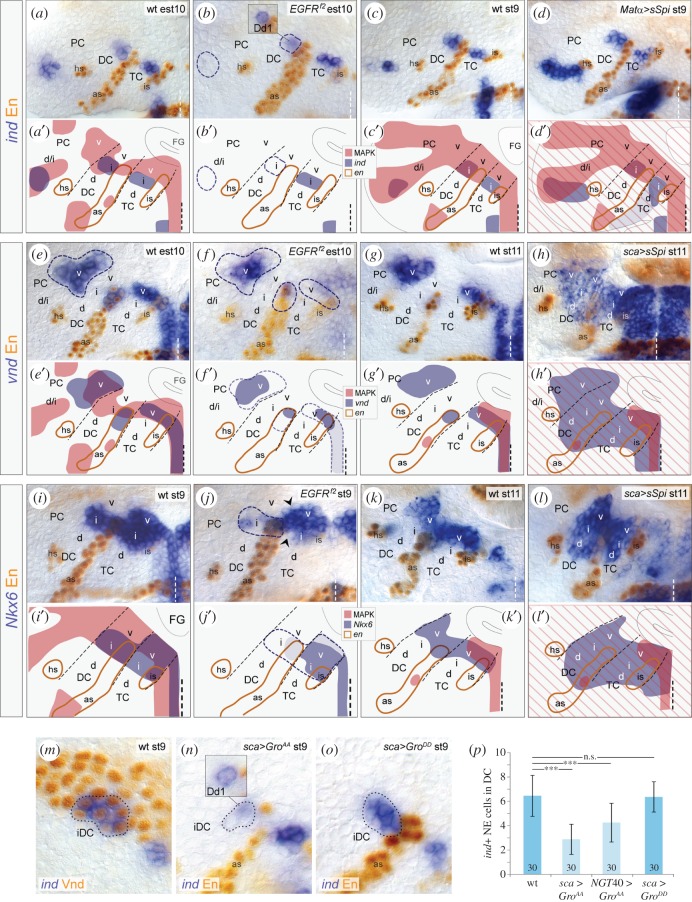Figure 2.
EGFR controls expression of ind, vnd and Nkx6. (a–l) Double stainings against ind (a–d), vnd (e–h), or Nkx6 mRNA (i–l) and Engrailed protein in different genetic backgrounds. Panels (a′–l′) show schematics of (a–l). (a,a′,b,b′) ind expression in the NE of DC/PC, but not TC, is strongly reduced in EGFRf2 mutants at early stage 10 (est10) (hatched areas in (b) indicate NE with a loss of ind expression), compared with wild-type (a). Note, ind expression is not affected in deutocerebral neuroblast Dd1 (inset in (b,b′)). (c,c′,d,d′) At stage 9, ind expression is dorsally expanded upon Matα > sSpi in TC/PC, but not in DC. (e,e′,f,f′) vnd expression is reduced in all neuromeres of EGFRf2 mutants at early stage 10 (areas are encircled with hatched line in (f,f′). (g,g′,h,h′) At stage 11, vnd expression is ectopically detected in the entire DC and intermediate/dorsal NE of TC upon sca > sSpi. (i,j′) At stage 9, Nkx6 expression is reduced in the EGFRf2-mutant intermediate DC (area encircled with a dashed line in (h)) and in a few cells in the intermediate/ventral TC (arrowheads in (h)). (k,k′,l,l′) Nkx6 expression is expanded into the intermediate and dorsal NE of TC/DC upon sca > sSpi at stage 11. (m) ind and Vnd are coexpressed in intermediate DC (encircled) at stage 9. (n) In sca > GroAA background, ind expression is reduced in the deutocerebral neuroectoderm, while unaffected in Dd1 (inset). (o) ind is not reduced upon sca > GroDD. (p) At stage 9, ind-expressing neuroectodermal cells in DC are significantly reduced after sca > GroAA (2,8 ± 1,2 cells) and NGT40 > GroAA (4,3 ± 1,6 cells), but not after sca > GroDD (6,4 ± 1,3 cells), compared with wild-type (wt) (6,5 ± 1,7 cells) (n = 30 each); error bars indicate s.d.; ***p < 0.0001; n.s., not significant; unpaired Student's t-test. For orientation and other abbreviations see figure 1.

